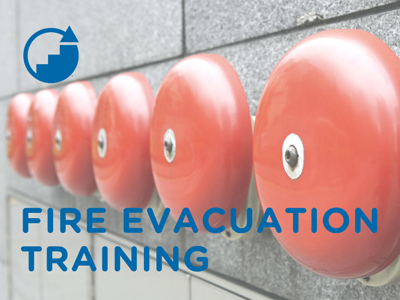 |
Preventing Violence at the Workplace - Retail |
0.50 |
This course addresses workplace violence, including its factors and types, and provides strategies for preventing it. |
 |
Coaching: The Coaching Process (Instructor Guide) |
1.50 |
In this course you will learn to: establish a solid coaching foundation by creating and maintaining healthy coach-employee relationships, be an effective coach by understanding your coaching objectives and communicating the expectations and goals to employees, and provide employees with positive and constructive feedback by monitoring and evaluating their performance.
This Instructor's Edition of this course includes notes and suggestions to assist you in presenting the material, whether in an in-person classroom setting or as an instructor-led online or distance-learning course. It also provides you with the answers to questions found in mid-lesson activities, as well as in the quiz that concludes the course. |
 |
Creating Community Collaborations |
2.00 |
Across the country, more and more communities are forming community collaborations to address the out-of-school needs of children and youth of all ages. When different segments of the community join together, share ideas, and pool their resources and efforts to create out-of-school time initiatives, children and youth benefit. What one organization or program may not be able to accomplish alone is often achievable when partnerships and collaborations among diverse groups and individuals are formed.
When school-age care professionals are knowledgeable about what it takes to create and sustain successful collaborations, they can play an important leadership role in creating out-of-school time initiatives and programs that will meet the needs of children and youth in their communities now and in the future. |
 |
Protecting Yourself While Responding to Earthquakes (Corrections) |
2.00 |
This course covers the importance of earthquake safety and protecting yourself before, during, and after an earthquake. It also covers how first responders should keep themselves safe when responding to an earthquake scene. |
 |
Safety and Survival in an Active Shooter Event in School Settings |
0.75 |
Welcome to Safety and Survival in an Active Shooter Event in School Settings. Recent national tragedies in schools remind us that the risk is real: an active shooter incident can happen in any place at any time in any school district. The best way to make sure you are safe is to prepare ahead of time and be ready.
Warning: Some of this content may be disturbing, if you need to take a break, please do so. If you exit and then come back into the course later, it will resume where you left off. |
 |
Cybersecurity Fundamentals |
1.00 |
With the increasing use of technology in all facets of life, the internet has quickly become a necessity in doing business, getting an education, providing medical care, and operating on a daily basis. The internet is essential to most industries and sectors that you could work in. This importance and usage also bring along the negatives of the internet. Cyber attackers can steal information from people who are not careful nowadays and you need to be able to protect yourself.
This course provides information on the internet and how to mitigate the risks of operating online to avoid putting yourself in danger. In addition, you will also learn about how to protect your data and respond effectively to any sort of cybersecurity incident. |
 |
Social-Emotional Learning, Character Building & Enhancing Quality |
2.00 |
By the end of this course, you will be able to:
Strengthen your understanding of the social-emotional learning and character building that expanded learning programs support.
Be able to articulate what social-emotional learning and character development looks like in children and youth.
Identify the connection between quality standards and social-emotional learning and character development. |
 |
Microsoft PowerPoint 2019 Complete |
16.00 |
PowerPoint 2019 Complete covers the concepts and skills needed for maximum productivity in PowerPoint, starting with fundamentals and working up to advanced tools and techniques. This course maps to the objectives of the Microsoft Office Specialist exams for PowerPoint 2019. Objective coverage is marked throughout the course, and you can download an objective map for the series.
Students will benefit most from this course if they want to start with the basics and become power users of 2019. The course covers how to create, navigate, format, and customize PowerPoint presentations, as well as advanced features such as animation, transition techniques, adding and formatting media, track corrections, working with multiple presentations, creating custom slide shows, and working with security and sharing options.
The course assumes students know how to use a computer, and that they're familiar with Microsoft Windows. It does not assume that they've used a different version of PowerPoint or any other presentation program before. |
 |
Overview of the Americans with Disabilities Act Topic 2: Reasonable Accommodations (Corrections) |
0.25 |
Welcome to the Overview of Americans with Disabilities Act, Topic 2: Reasonable Accommodations. |
 |
Exploring Four Areas of School-Age Development: Physical Development |
0.50 |
One of the most helpful ways to gain an understanding of the needs and interests of youth between 5 and 12 is to examine their development from four different perspectives: 1) Physical Development, 2) Cognitive Development, 3) Social Development, and 4) Emotional Development. In this course, we will explore the physical development perspective. |
 |
Engaging English Learner Families and Communities |
1.00 |
This course will help you go deeper and gain more examples and strategies related to some of the five tips for engaging English learners' families and communities introduced in the training. Through this online course, you will learn more tips and strategies to better engage the English learner (EL) families in your school or classroom. |
 |
E-Mail Etiquette: E-Mail Messages |
0.50 |
In this course, you will learn how to take advantage of the headers in e-mail messages. You will learn about the “To” field, in which you should type the recipient’s e-mail address. You will also learn when to send carbon copies and blind carbon copies of messages. You will learn the importance of writing a proper subject field for e-mail messages and that the header also includes the date and time of sending messages. Finally, you will learn how to construct the body of an e-mail message, add a personal touch to your messages by including a proper greeting, relay information by placing it in the appropriate order, and use different types of lists effectively. You learned the correct way to write long e-mail messages to keep recipients interested in the information and how to effectively close e-mail messages. |
 |
Hazard Communication Basic |
1.00 |
This course covers the basics when it comes to hazard communication. The topics will range from the Hazard Communication Standard to the labeling of hazardous materials. |
 |
Fire Evacuation Training |
0.33 |
This course covers proper fire safety techniques to help keep you and your customers safe. It also covers the key elements to remember during a fire evacuation.
|
 |
End-of-Life Care (Part 1): Introduction—Palliative Care |
1.00 |
Nursing educator Dr. Jacqueline Coates, DNP, MS, RN, FNP-C, is a retired paramedic who brings her experiences in prehospital medicine and hospice to this introductory lesson in palliative care. The series begins by discussing the concepts of hospice and palliative care. Her expertise and teaching acumen provide several opportunities for you and your team to expound upon the principles she introduces.
The multiple-choice exam is designed to test your knowledge of the material you just reviewed. You have two attempts to gain an 80% or higher on this exam. Please take your time and answer each question carefully. |
 |
Behavior Intervention Plans for Paraprofessionals |
1.00 |
This course covers information necessary to understand and implement effective behavior intervention plans (also called positive behavior support plans) as part of an Individualized Education Plan (IEP). To adequately support a student, a BIP helps the school and team document a child's behavior and present the data when making suggestions or recommendations. |
 |
Motivation: Identifying, Planning, and Implementing: Using What You've Learned |
0.50 |
In life, to be a successful, you must have a plan. Napoleon Hill, author of Think and Grow Rich, said, “Create a definite plan for carrying out your desire and begin at once, whether you ready or not, to put this plan into action.” This course has provided you with the information and—we hope—the inspiration to improve your motivational skills and work toward personal success. The final two steps are up to you: You must implement what you have learned and continue to work on improving your skills.
In this course you will learn to: work toward improving your motivational skills by using the 21-day habit and satori, and use resources, including websites and books, to continue working on your motivational skills. |
 |
Domestic Abuse |
2.00 |
Domestic Violence, or Intimate Partner Violence (IPV), is defined as physical abuse or aggression that occurs in a romantic relationship. “Intimate partner” refers to current and former spouses and dating partners.
This course will discuss the causes of domestic abuse, explain what characteristics to look for when identifying domestic abuse, determine appropriate ways to address abuse in your relationship or with a loved one, suggest ways to prevent abuse, and provide resources for further assistance with domestic abuse. |
 |
CERT Unit 1: Disaster Preparedness |
1.00 |
The Community Emergency Response Team (CERT) program educates volunteers about disaster preparedness for the hazards that may occur where they live. This course covers the functions of CERT and how CERT fits into your community's emergency preparedness structure. The types of hazards that can affect communities and the hazard's potential to impact people, health, and infrastructure are discussed in this course. In addition, this course also will teach you how to face a potential disaster.
It is just one of many health and safety courses we offer. This course will help you learn the best practices for keeping yourself safe and healthy when on the job. |
 |
Construction Safety & Prevention Program: OSHA Inspections |
0.50 |
This course covers the process of OSHA inspections, the penalties incurred when a workplace does not satisfy OSHA standards, and how to properly respond to an OSHA inspection. |
 |
Zoom Meeting Basics |
0.50 |
Zoom is a web-based video conferencing tool with a local, desktop client and a mobile app that allows users to meet online, with or without video. Zoom users can choose to record sessions, collaborate on projects, and share or annotate on one another’s screens, all with one easy-to-use platform. In this course we will go through the major features of Zoom Meetings. |
 |
Internet Safety for Kids |
1.00 |
In this course, you will learn about the common dangers of frequent internet use, the best ways to deal with and avoid such dangers, methods to teach kids about internet safety, and more. |
 |
OSTPD - Supporting Attendance through After School Programming |
1.00 |
This training will cover a number of areas regarding how after school programs can support youth attendance in school. By looking at and exploring the connection between after school programming and attendance in school, we see how after school programming supports attendance at school as well as how to coordinate with the school in order to maximize the positive impact of after school on school attendance through collaboration. |
 |
Sales Management: Forecasting Sales Revenue |
0.50 |
This course will focus on identifying sales forecast factors and types of sales forecasts as well as discussing various types of forecasting approaches. |
 |
The Neuropsychology of Trauma and How It Impacts Learning |
1.00 |
Understanding the root of trauma and how we can cultivate a well- functioning classroom is an essential task for educators. How do VUCA (volatility/uncertainty/complexity/ambiguity) impact child and adolescent development? How do ACEs (adverse childhood experiences) impact child and adolescent development? How do SCARF needs (status/certainty/autonomy/relatedness/fairness) impact child and adolescent development? This workshop gives participants insight into the workings of the sympathetic (fight or flight) and parasympathetic nervous system (rest and digest) and their impact on learning. |


























